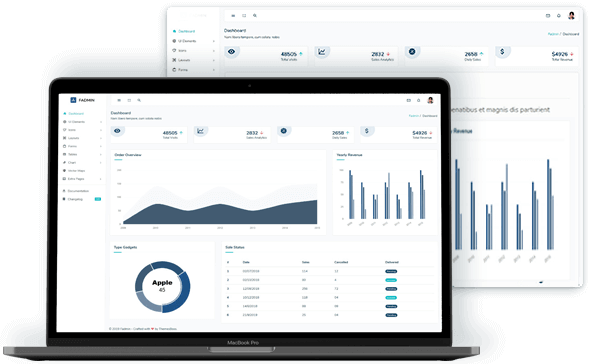Development teams are under increasing pressure to meet the demands of CMMC compliance in today’s evolving cybersecurity landscape. The need to secure sensitive information and reduce risks has never been more critical. To succeed, teams must proactively address CMMC requirements and implement effective best practices. By understanding these intricacies and taking robust measures, development teams can lead the way in ensuring the integrity of their processes. What strategies are essential for achieving CMMC compliance, and how can teams overcome the challenges that lie ahead?
Key Takeaways
- Establish a strong compliance framework to navigate CMMC complexities and ensure security in development processes.
- Implement robust access controls, and continuous risk assessments, and refine security protocols regularly to guarantee CMMC adherence.
- Foster a culture of security and continuous monitoring, assessment, and training to adapt to evolving threats and regulatory requirements.
- Conduct regular risk assessments to identify vulnerabilities and implement best practices to mitigate risks and ensure successful project outcomes.
- Develop a comprehensive understanding of CMMC requirements and standards to ensure development teams consistently meet compliance obligations.
Understanding CMMC Compliance Requirements
To effectively implement best practices for CMMC compliance, development teams must first grasp the intricacies of the Cybersecurity Maturity Model Certification (CMMC) compliance requirements, which encompass an extensive set of standards and protocols designed to safeguard sensitive information and reduce cyber threats. This understanding is essential to ensuring the development of secure systems that meet the stringent requirements of CMMC compliance.
Implementing Best Practices for CMMC
Implementing best practices for CMMC compliance is an ongoing process that requires development teams to consistently assess and refine their security protocols to guarantee continuous adherence to the stringent requirements of the Cybersecurity Maturity Model Certification. This involves establishing a culture of security, conducting regular risk assessments, and implementing robust access controls to secure the integrity of sensitive data.
CMMC Compliance Challenges in Development
While establishing a culture of protection is paramount to Maturity Model Certification compliance, development teams often face unique challenges that can hinder their ability to meet the stringent requirements of the Cybersecurity Maturity Model Certification. Insufficient resources, inadequate training, and conflicting priorities can impede compliance efforts, highlighting the need for effective best practices for Maturity Model Certification compliance.
Securing CMMC Compliance in Development
Establishing a strong compliance framework is crucial for development teams seeking to navigate the complexities of CMMC compliance, particularly in high-stakes environments where sensitive data and intellectual property are at risk. By implementing best practices for CMMC compliance, teams can guarantee the security and integrity of their development processes, mitigating risks and ensuring successful project outcomes.
Maintaining Ongoing CMMC Compliance
Regularly, development teams must revisit and refine their compliance strategies to maintain ongoing CMMC compliance, as the constantly evolving threat environment and changing regulatory requirements necessitate continuous adaptation and improvement. To guarantee sustained compliance, teams should implement a culture of continuous monitoring, assessment, and training, incorporating best practices for CMMC compliance into daily operations.

Frequently Asked Questions
What Are the Consequences of Non-Compliance With CMMC Regulations?
Non-adherence to CMMC regulations can result in severe consequences, including loss of DoD contracts, reputational damage, and financial penalties, underscoring the importance of following CMMC’s best practices for development teams.
How Often Should CMMC Compliance Audits Be Conducted?
CMMC compliance audits should be conducted at least annually, with more frequent internal assessments to guarantee ongoing compliance and identify potential vulnerabilities, thereby preserving the integrity of sensitive defense information.
Can CMMC Compliance Be Achieved Without a Dedicated Compliance Team?
While possible, achieving CMMC compliance without a dedicated compliance team can be challenging, requiring significant resources and expertise; it is recommended to have a dedicated team to guarantee effective compliance and minimize risk.
What Is the Average Cost of Implementing CMMC Compliance Measures?
The average cost of implementing CMMC compliance measures varies widely, depending on factors such as company size, complexity, and security maturity, with estimates ranging from $10,000 to $500,000 or more.
Are CMMC Compliance Requirements Applicable to All Development Teams?
No, CMMC compliance requirements do not apply to all development teams. Only those working with the US Department of Defense (DoD) or handling controlled unclassified information (CUI) must comply with CMMC regulations.
Conclusion
To sum up, adhering to CMMC compliance requirements is vital for development teams to guarantee the integrity of sensitive information and reduce risks. By implementing robust access controls, conducting regular risk assessments, and establishing a culture of security, teams can maintain ongoing compliance and safeguard development processes. Consistent assessment and refinement of security protocols are critical in maneuvering the complexities of CMMC standards, ultimately securing success in the development environment.
You May Also Like:




